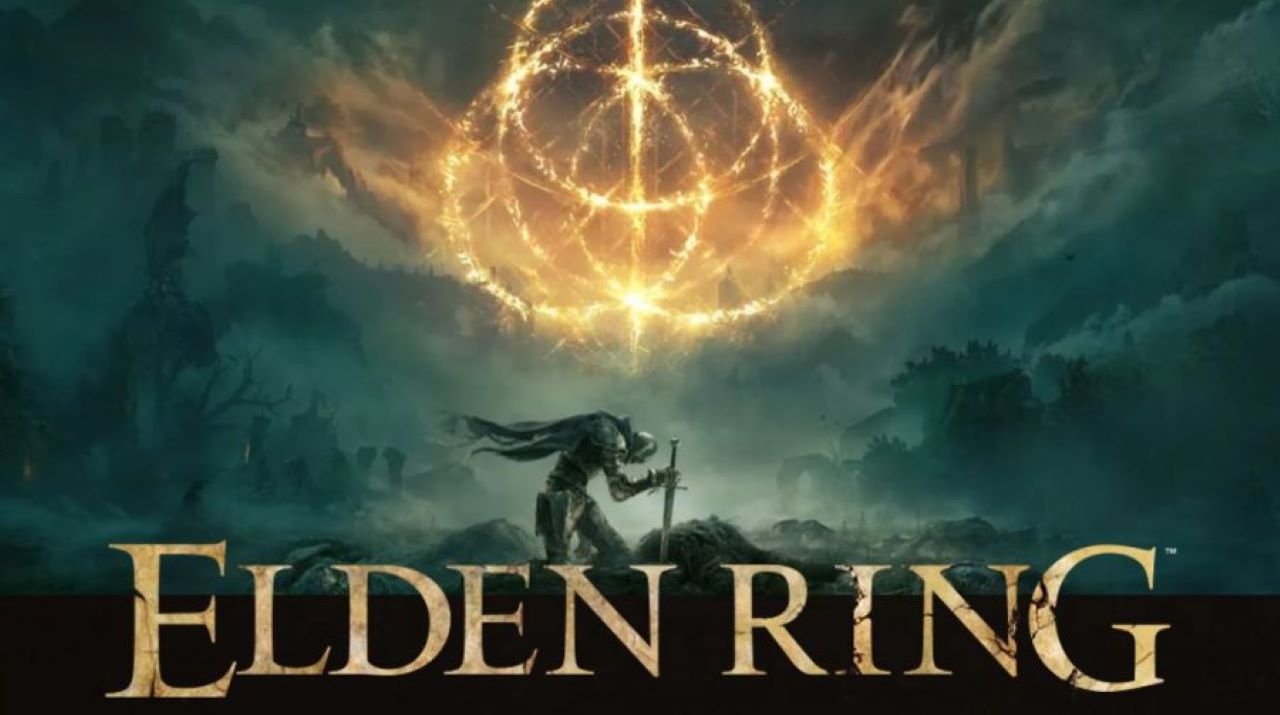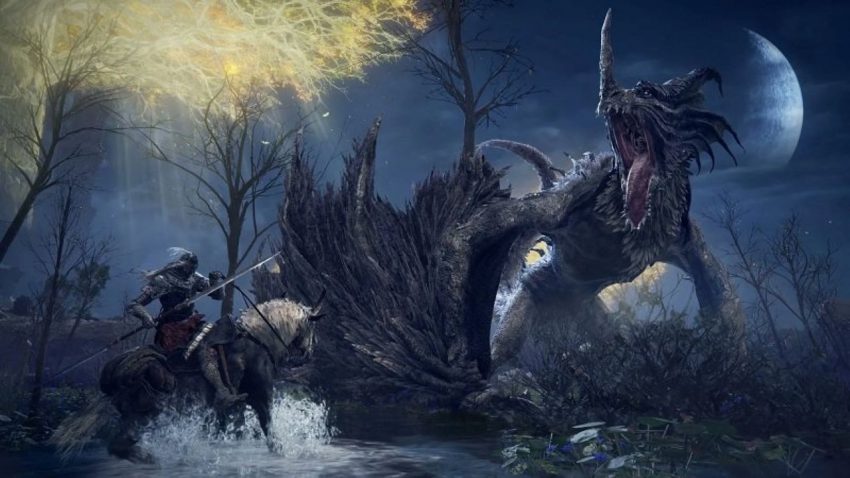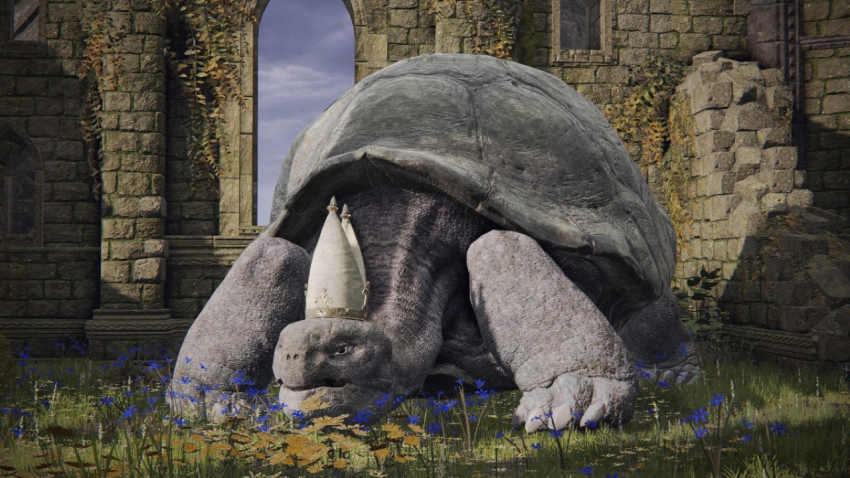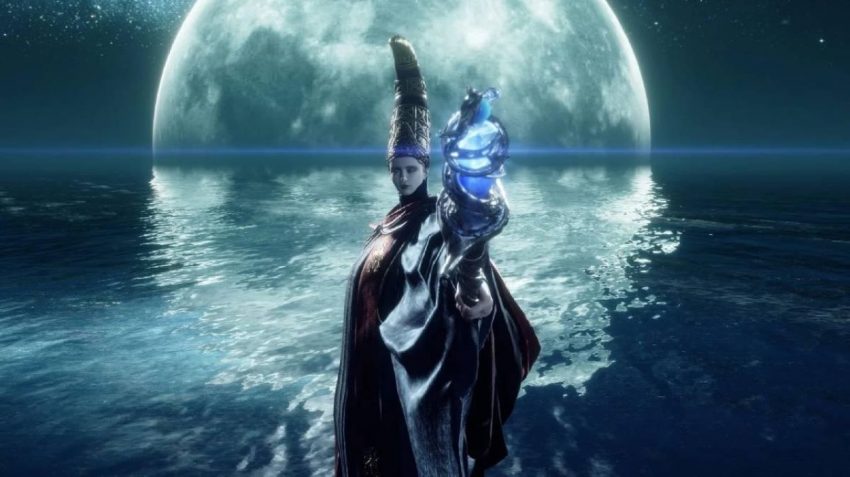Inspired by Zelda: Elden Ring Carries the Torch that Breath of the Wild Lit
Posted on April 16 2022 by Mike Midwood

Welcome to another installment of Inspired By Zelda, the series of articles looking at games new and old that take inspiration and create a foundation based on some of the classic Zelda titles we know and love. Our aim is to spotlight the games that Zelda fans might enjoy adding to their catalog. Up today is Elden Ring by developers From Software, available on PlayStation 4, Playstation 5, Xbox One, Xbox Series S/X, and PC.
Reflecting on my maiden experience with Elden Ring seems almost impossible. Over the last month and change, while the gaming media swooned over this latest opus, I spent nearly 200 hours completing the game, rushing through new game plus, and starting a new character to try a different build. That initial playthrough took about 150 of those hours; hours of nearly constant engagement with a game I almost couldn’t believe existed. By the midway point, my early probing of the game seemed like a distant memory, as did those median moments when I slew the final bosses. Looking back, it feels more like having gone on an arduous journey than having played a video game.
I’m a dedicated From Software fanatic. Some may remember a previous Inspired by Zelda article that I wrote on the original Dark Souls. Hidetaka Miyazaki, director of Dark Souls, spiritual predecessor Demons’ Souls, and spiritual successor Bloodborne, has cited The Legend of Zelda as an inspiration and the similarities have not gone unnoticed. The design philosophies of classic Zelda were clear to see in Dark Souls, but the mechanical and thematic distinctions between them, along with the scope of both franchises, allowed each to carve out their own place in the gaming landscape. However, with Elden Ring, the inspiration of one monumental title couldn’t be more obvious.
Breath of the Wild is the foundation for Elden Ring. Statements like this are often simplistic and reductive, but it’s simply true in this case; Elden Ring is a “Souls-like” game with the open-world design revolutionized by Breath of the Wild. On the surface, I was uncertain how well the highly focused combat and progression of the former would mesh with the breadth and accessibility of the latter. Amazingly, not only do these elements merge in organic coalescence, but Elden Ring manages to expand on it’s Hyrulian inspiration, pushing the genre’s boundaries even further forward.
Death of the Wild

It was appropriate to address it early in my Dark Souls article and I feel the same is true for Elden Ring. From Software titles have developed a reputation for being extremely difficult. While I think this notion is overblown, it is fair to say that they are harder than most modern games. Many fans, myself included, have argued that despite the higher than average challenge and lack of difficulty options, these games are actually more malleable than most when it comes to adjusting the difficulty. It’s just that those levers must be pulled in the game itself and not selected on a menu screen. This is often true of the Zelda series as well, with the player’s level of completion often dictating the game’s challenge. This is truer of Elden Ring than ever before, resulting from both the freedom of the open world and the plethora of customization options when preparing for combat.
Elden Ring’s setting, The Lands Between, employs the region-based overworld map from Breath of the Wild but doesn’t universally scale the enemies in those areas. Some regions are clearly designated to be approached during the early, middle, or late game. The starting area, Limgrave, connects directly to a pair of other regions. To the south is the Weeping Peninsula, an area balanced similarly to Limgrave and manageable for weak characters. Going too far to the northeast, however, will place players in the Caelid Wilds, a far more difficult region with tougher enemies, but better rewards. While new players will want to steer clear of this brutal wasteland, Elden Ring is content to allow them to wander there. As a result, players can become very powerful by exploring the open world before tackling the more demanding mandatory challenges. I found that being a thorough adventurer left me overpowered for most of the early and mid-game.
The distinction between mandatory and optional content should also make Elden Ring a more accessible experience. Like Breath of the Wild, a miniscule portion of the game’s content is required to see the end credits. For a game with over 100 different boss encounters, only eight need to be defeated to finish the game, and only the last couple are particularly difficult. Don’t get me wrong; Elden Ring has some of the most stupidly difficult bosses in the From Software pantheon, but these are all optional, endgame fights a new player is unlikely to even find. It seems a concerted effort was made to make the mandatory content more approachable for newcomers and to make the various methods of progression easier to parse.
Breadth and Depth

Breath of the Wild’s greatest shortcoming was the sacrifice it made to the quality and personality of content so that it could fill its majestic world with a greater quantity of it. Elden Ring’s greatest accomplishment is how it addresses this issue. The two masterpieces have incredibly analogous content dispersed across their enormous worlds, and at every level, Elden Ring improves upon the framework laid down by Breath of the Wild.
The Zelda staple most palpably absent from Breath of the Wild was traditional dungeon crawling. While the Divine Beasts were certainly cool set pieces and their connections to the lore and world were excellent, they didn’t scratch that temple-delving itch that fans understandably felt. Elden Ring’s “legacy dungeons” are absolute masterworks in dungeon design, providing a set of six structures of incredible density. Seriously, it can’t be overstated; Elden Ring has some of the most outrageously complex dungeons I have ever experienced in a video game. The first and simplest, Stormveil Castle, was a roughly four-hour maze of hidden passages, secret boss fights, and satisfying looting. Some of the later dungeons, like the colossal Volcano Manor or the tempestuous Crumbling Faram Azula, took days to fully explore. Topped with the constant sense of discovery and history, Elden Ring sets a new standard for dungeon design in video games.
Smaller-scale landmarks are an integral part of open world games. In Breath of the Wild, this role was mostly filled by the many Sheikah Shrines. Despite some memorable challenges contained within, their repetition in both content and presentation was a sticking point for many. Discovering them was often more rewarding than solving their puzzles, if they even presented one. In Elden Ring, the thrill of finding a hidden dungeon in the wild is even greater, since there’s no beeping alarm signifying that you’re near one, and the interiors are far more satisfying to traverse. The visual diversity still isn’t great, with the smaller dungeons being divided into a handful of repeated motifs (caves, tombs, mines, etc.), but the designs of these locations are far more unique. The layouts, traps, puzzles, loot, and bosses found within are often very different and give each one a sense of singularity. Players will spend a lot of time in these brief caverns getting stronger for the main content, and it never feels like a monotonous chore.
What about those miniscule overworld diversions? Breath of the Wild’s Korok seeds provided a nice point of interest while traversing the enormous overworld, but their challenges could become predictable, and their rewards were only meaningful in bulk. The analog in Elden Ring would be the White Teardrop Scarabs (there are also red and blue scarabs that refill your healing and magic flasks respectively). While not nearly as numerous as Hetsu’s family, these elusive insects serve essentially the same purpose. I can’t give them credit for originality, as they lift some of their challenges directly from the Koroks, but the quality of the rewards is incomparable. White scarabs tend to drop rare upgrade materials or Ashes of War, special abilities that can be applied to your weapons. These rewards, the ashes especially, can be game changing discoveries that completely alter the trajectory of a playthrough. At every level, Elden Ring has intelligently tweaked and enhanced the content of its inspiration.
Don’t Call It A Comeback

As was the case with the comparisons made between their predecessors, Elden Ring and Breath of the Wild aren’t close to being mirror images of one another. It remains the case that the former incorporates significantly more RPG into its action-adventure base. The collections of weapons, shields, bows, armor, magic casting equipment, and statistical modifiers are enormously larger in Elden Ring. Making decisions about how to build your character is very important and resetting these decisions comes with a tangible cost. Matching elemental buffs and resistances plays a major role in many instances. Essentially, Elden Ring has many more technical options for the player to pour over, and these options effect gameplay far more drastically than in Breath of the Wild.
In terms of both presentation and tone, the narrative of Elden Ring also continues the From Software tradition more so than that of the Zelda franchise. While the immediate exploits of the player character, the Tarnished, are easier to decipher than in previous From works, they also constitute a much smaller proportion of the narrative content. The history and lore of The Lands Between and its big players, famously concocted by A Song of Fire and Ice author George R. R. Martin, remains obtuse unless the player is willing to piece together bits of information found in item descriptions and obscure dialogues. Learning about the nature of this world requires even more diligence than usual, as the increase in scope means there’s so much more to unravel. Even after my lengthy adventures through Elden Ring, I’m still only privy to the details of the basic plot. The “hows” and “whys” of this universe will likely elude me until I hit the wiki.
Similarly to the stories From Software has crafted in the past, there aren’t really heroes and villains in Elden Ring. There’s just the competing interests of different factions and entities, each with their own understandable goals and ideals. The strings of this universe are pulled by unseen, indiscernible, cosmic forces whose motivations are beyond the capacity of human knowledge. Across all mediums, many people find these kinds of ambiguities unsatisfying. In Elden Ring, they simply must be accepted. I think this kind of storytelling is fascinating, but it might not appeal to players who want to play as a good character who defeats all the bad characters. The scope of the game’s conflicts is just grander than that dichotomy.
There Can Be More Than One

Throughout this piece, it may seem to some like I’ve been bashing Breath of the Wild in order to champion Elden Ring’s excellence, but this really isn’t the case. It is true; I think Elden Ring is a major improvement over its obvious inspiration, but this is a consequence of context. Breath of the Wild is a five-year old game and a trendsetter of massive proportions. Elden Ring, half a decade later, has the benefit of improved technology, honed design techniques, and lessons learned to expand and build upon what came before. There’s no insult in saying that a more recent game evaluated the elements of an older one, identified avenues for improvement, and explored those avenues successfully. The last game to receive the kind of overwhelming critical praise that Elden Ring has was, in fact, Breath of the Wild. The legacies of both games are likely already secured. This is the way iterative video games in established franchises should work. From Software clearly reveres the latest Zelda masterpiece, so much so that they took on the challenge of trying to make its brilliant legend shine with even more luster.
Despite the obvious comparisons, Elden Ring stands tall on its own two feet. The Lands Between is a world blending the glorious and the depraved, filled with joy and sadness. Setting out into those untamed wilds will produce journeys of unprecedented wonder, fear, struggle, and triumph. It’s a gigantic world and a gigantic game. I didn’t even mention the crafting system, mounted combat, or other types of landmarks found in the overworld because there’s just too much to cover in one article. The quality and quantity boxes can both be checked twice. Most strikingly, the changes made to progression and flexibility during combat should make this game more accessible to more people than previous From Software games. Whether you’re a fan of Zelda, Dark Souls, open-world games, fantasy, or just video games in general, Elden Ring is the definition of a must play title. There’s no doubt we’ll still be talking about it in five years, the same way we do with the game that made its greatness possible.

Hi, I’m Mike Midwood and I’m a Senior Editor at ZeldaDungeon! Video games and literature are my greatest joys in life. An avid Zelda fan, some of my other favorite games include the Resident Evil and Dark Souls series. I hope you enjoy my content here on ZeldaDungeon!
“The sword has no strength unless the hand that holds it has courage.”



